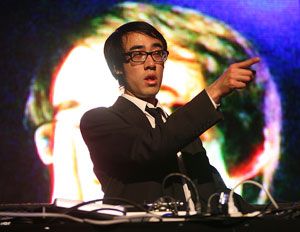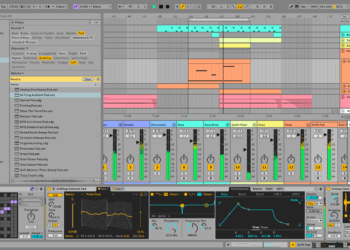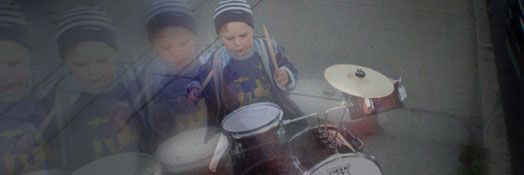While we are on the subject, I felt like bringing back a part of this older article that I wrote for Remix magazine on the future of visuals in music. Mike Relm had some interesting things to say about his transformation from a turntablist to a visualist (?) Many people including Dj Kentaro, seem to feel that visuals are the next big thing:
Kentaro still believes that DVJ technology is the wave of the future. “DVJ and turntablism plus visuals equals neo-turntablism,” Kentaro says. “This could be a next thing, I think, but you need to have a good creator to create visuals that make sense. Just mixing and scratching movies is not turntablism; the visuals need to take a step up. This will be some homework for contemporary turntablists, for sure.” There you have it kids, you better save up for a pair of DVJs and start practicing for DMC 2012!
but as a few people wisely pointed out here on DJ TT, not everyone shares the same vision:
JAC said:
I was reading an interview with Matt Bellamy of Muse recently, and he was explaining that they are toning down their visuals heavy, over-the-top ridiculous show. The reason? Because with such an outlandish visual display, people would come to stand and watch, staring at the stage instead of participating and moshing etc.
I reckon a similar kind of thing could happen if Vj’ing becomes widespread in clubs. People will end up gazing at screens all night long, instead of dancin.
ON THE ROAD WITH A PRO
DVJ technology has enabled artists such as Mike Relm to turn their live sets into a visual tale with video as the storyboard. Once a top-level turntablist and ITF champion, Mike Relm has shifted his talents into the new realm of video DJing, leading to a position as the Blue Man Group’s opening act. Ironically, he compares video to the early days of turntablism. “Ten years ago when we were doing turntablist shows, that was new, and it took people a while to understand what we were doing,” Relm says. “There are all these intricacies you have to figure out in the first few minutes or you’re going to spend the entire hour trying to figure out what’s going on.” That situation was understandable with turntablism, given that you had to be a few feet away from the artist to really get a visual idea of what he was doing. Video DJ-ing, however, should be obvious, right? Not the case, Relm says. “It took people a while to figure out what I was doing onstage,” he says. “Ninety percent of the audience had no idea you could scratch video. I think that took away from the show because I would not get a reaction until halfway through it.” Slowly, Relm and a few other pioneers increasingly find success and great crowd reactions as they continue to incorporate more and more video into their sets.
As equipment prices come into reach and technology catches up with imaginations, more people may hop on the video bandwagon. The problem now seems to be content. Although most of the country boasts extensive digital audio collections thanks to P2P networks, hardly anyone has any decent video files lying around. In the end, it may not be video at all that opens the visual doors to DJs everywhere. Some people think we’re heading into a ’90s rave revival, so I wouldn’t be surprised if you start to see some computer-generated visuals making a comeback in clubs. The good news is that they won’t be cheesy, never-ending fractals, but incredibly beautiful 3-D art that breathes and dances in response to the DJ’s every action.










